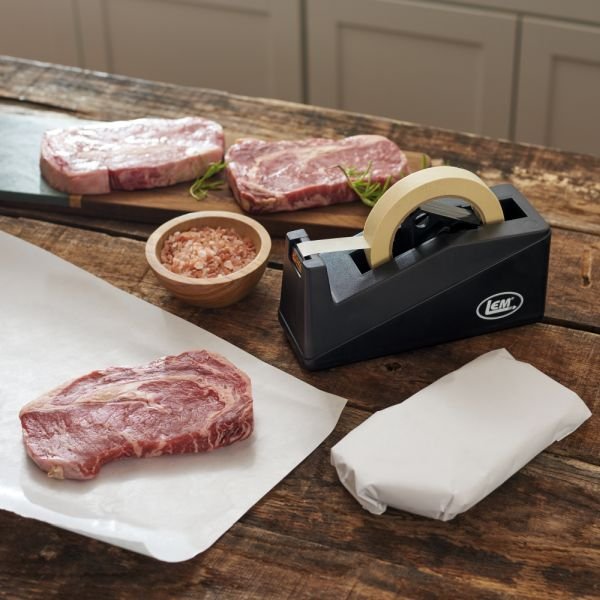The Ultimate Guide: How To Store Meat In The Freezer
Do you often encounter freezer-burned, dry, or spoiled meat when you open your freezer? No need to fret! I have the perfect solution for you. Today, we will delve into the proper techniques for storing meat in the freezer. Whether you’re an avid cook or just someone who wants to maintain the freshness and taste of your meat, it’s essential to learn the art of freezing meat correctly. Let’s get started and make sure your frozen meats stay delicious and safe to consume for months to come!
How to Store Meat in the Freezer
Properly storing meat in the freezer maintains its quality and safety for longer. Whether you bought meat in bulk, have leftovers, or want to prepare for future meals, it’s important to know the right techniques. In this guide, we’ll cover the preparation process, packaging methods, and best practices to keep meat fresh and avoid freezer burn.
Section 1: Preparing Meat for Freezing
When it comes to freezing meat, proper preparation is crucial. Follow these steps to ensure your meat is ready for the freezer:
Clean and Trim
Before freezing, it’s important to clean the meat thoroughly. Rinse it under cold water to remove any residue or blood. Additionally, trim away excess fat or connective tissues as they can affect the meat’s quality during freezing and thawing.
Portioning
Divide large cuts of meat into smaller portions based on your consumption needs. This allows for easier defrosting later on, so you can thaw only what you need. Moreover, smaller portions freeze and thaw more efficiently, reducing the risk of bacterial growth.
Seasoning or Marinating
If you plan to season or marinate your meat, it’s often better to do so before freezing. This allows the flavors to penetrate the meat during the freezing process, resulting in a more flavorful end product. However, if you prefer to season or marinate after thawing, ensure the meat is dry and seasoned thoroughly before cooking.
Packaging and Wrapping Meat:
Proper packaging and wrapping techniques play a vital role in preserving the quality of meat in the freezer. Consider the following methods for packaging your meat:
Freezer Paper
Using freezer paper is a popular and effective way to wrap meat for freezing. Follow these steps:
- Place the meat on the dull side of the freezer paper.
- Wrap the meat tightly, folding the paper over the meat’s edges.
- Secure the paper with tape or freezer-safe adhesive.
- Label the package with the type of meat and date.
Vacuum Sealing
Vacuum sealing is another excellent method for packaging meat, as it removes excess air and prevents freezer burn. Here’s how to vacuum-seal meat:
- Place the meat in a vacuum-sealing bag.
- Seal one end of the bag according to the manufacturer’s instructions.
- Insert the open end into the vacuum sealer and activate the vacuum and sealing functions.
- Label the sealed bag and store it in the freezer.
Freezer Bags
Using heavy-duty, freezer-safe plastic bags is an affordable and convenient option for packaging meat. Follow these steps:
- Place the meat in a zip-top freezer bag, squeezing out as much air as possible.
- Seal the bag securely, leaving about an inch of headspace to allow for expansion during freezing.
- Label the bag with the meat type and date.
Freezing and Organizing Meat:
After properly packaging your meat, it’s time to freeze and organize it in the freezer. Consider the following tips:
Freezing Temperature
Set your freezer temperature to 0°F (-18°C) or below to ensure optimal meat preservation. Maintaining a consistently low temperature prevents bacterial growth and maintains better overall quality.
Freeze Immediately
To maintain freshness, freeze your meat as soon as possible after purchasing or cooking. Extended periods at room temperature can promote bacterial growth and compromise the meat’s quality and safety.
Proper Placement
When placing meat in the freezer, ensure there is enough space around each package. Adequate air circulation promotes faster freezing and helps maintain a consistent temperature. Avoid overcrowding, as it can lead to slower freezing and potential temperature fluctuations.
Organizing and Rotating
Proper organization is essential for easy access and efficient usage. Consider these tips:
- Utilize clear containers or storage bins for better visibility.
- Label each package with the meat type and date to easily identify and rotate older items.
- Keep similar meats together, such as poultry, beef, or pork, to streamline meal planning.
Defrosting Meat Safely:
Knowing how to defrost frozen meat safely is just as important as freezing it properly. Here are some recommended methods:
Refrigerator Thawing
Refrigerator thawing is the safest method that helps maintain the meat’s quality. Simply transfer the frozen meat to the refrigerator and allow it to thaw slowly. Keep in mind that larger cuts may take longer to thaw completely and should be placed on a tray to catch any potential drips.
Cold Water Thawing
If you need to defrost meat quickly, you can use the cold water thawing method. Ensure the meat is in a leak-proof package, and submerge it in cold water. Change the water every 30 minutes to maintain a safe temperature. Once thawed, cook the meat immediately.
Microwave Thawing
Microwave thawing is the quickest method, but it should be used with caution. Follow your microwave’s instructions for defrosting meat and cook it immediately after thawing to prevent bacterial growth.
Maximizing Meat Quality and Shelf Life:
To ensure your meat retains its quality and stays safe to consume, consider the following tips:
Use the FIFO Method
FIFO (First In, First Out) is a simple organization technique that helps prevent food waste. When storing multiple meat packages, prioritize using the older ones first to maintain freshness and prevent spoilage.
Check for Freezer Burn
Regularly inspect your frozen meat for signs of freezer burn, such as dry or discolored patches. Freezer burn affects the taste and texture of meat but does not necessarily render it unsafe to eat. If you notice freezer burn, trim off the affected areas before cooking.
Labeling and Dating
Properly labeling and dating your frozen meat packages ensures you know what you have and when it was frozen. Use waterproof labels or freezer-safe markers to prevent the information from fading or smudging over time.
Temperature Monitoring
Invest in a freezer thermometer to monitor the temperature and ensure it consistently stays at or below 0°F (-18°C). Regularly checking the freezer temperature helps maintain the quality and safety of your stored meat.
Recommended Storage Duration
While frozen meat is safe to eat indefinitely if stored at a constant 0°F (-18°C), quality starts to decline over time. For optimal quality, consider the following storage duration guidelines:
- Ground meat: 3-4 months
- Steaks and roasts: 6-12 months
- Poultry: 9-12 months
- Cured meats: 1-2 months
By following these guidelines, you can maximize the quality and longevity of your stored meat, ensuring delicious meals for an extended period.
Store Your Meats In The Freezer For Over One Year Using This Method; No Freezer Burn & Fresh Tasting
Faqs for How To Store Meat In The Freezer:
Use vacuum-sealed bags: Vacuum-sealing the meat removes the air, significantly extending its freezer life. This method helps preserve the quality and flavor for months.
Partially freeze meat before packaging: Place the meat in the freezer for about 30 minutes to an hour before packaging. This makes it easier to wrap or vacuum seal without creating a mess.
Storage duration: Most meats can be safely stored in the freezer for several months. However, it is advisable to consume them within 3-6 months for best quality and taste. Ground meat should be used within 3-4 months.
Set the freezer temperature: Keep your freezer at or below 0°F (-18°C) to ensure the meat remains frozen and safe to consume. Regularly check and maintain the temperature to prevent any thawing.
Avoid repeated thawing and refreezing: While it is generally safe to refreeze meat that has been thawed in the refrigerator, it is best to avoid multiple thawing cycles. Repeated freezing and thawing can affect the quality and texture of the meat.
Organize by date and type: Store meat in separate sections or drawers, organized by the type of meat and the date of purchase or freezing. This ensures you can easily find and use the oldest meat first, reducing the chances of spoilage.
Final Thoughts
Properly storing meat in the freezer is crucial for maintaining quality and preventing spoilage. Follow these steps to keep your meat fresh and safe. First, tightly wrap the meat in plastic wrap or freezer bags to avoid air exposure and freezer burn. Second, label packages with the type of meat and freezing date for freshness tracking. Lastly, organize your freezer and maintain a consistent temperature below 0°F (-18°C) to optimize frozen meat longevity. By following these practices, you can confidently store meat in the freezer, preserving its taste and texture for later use.


